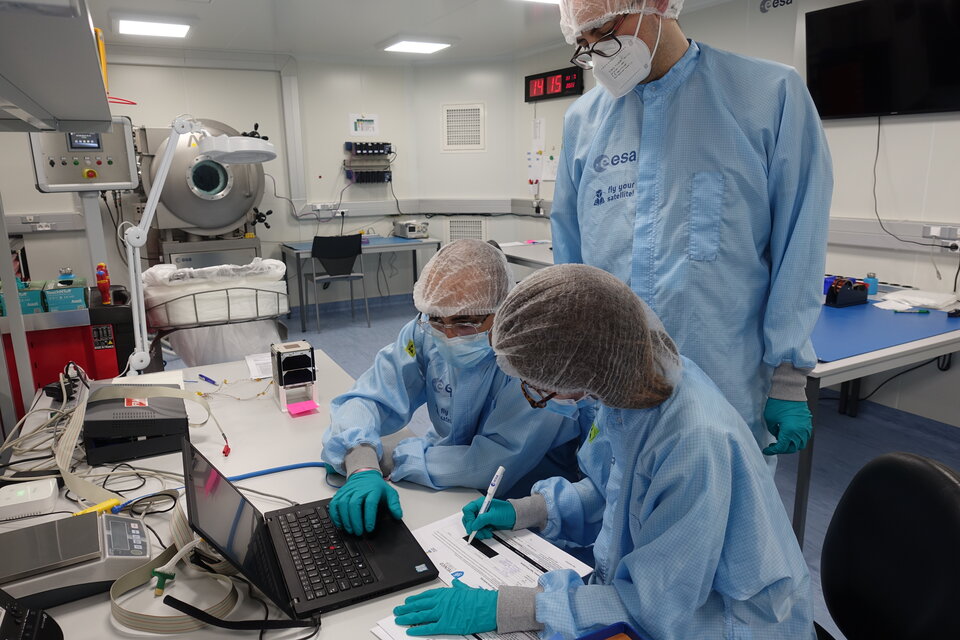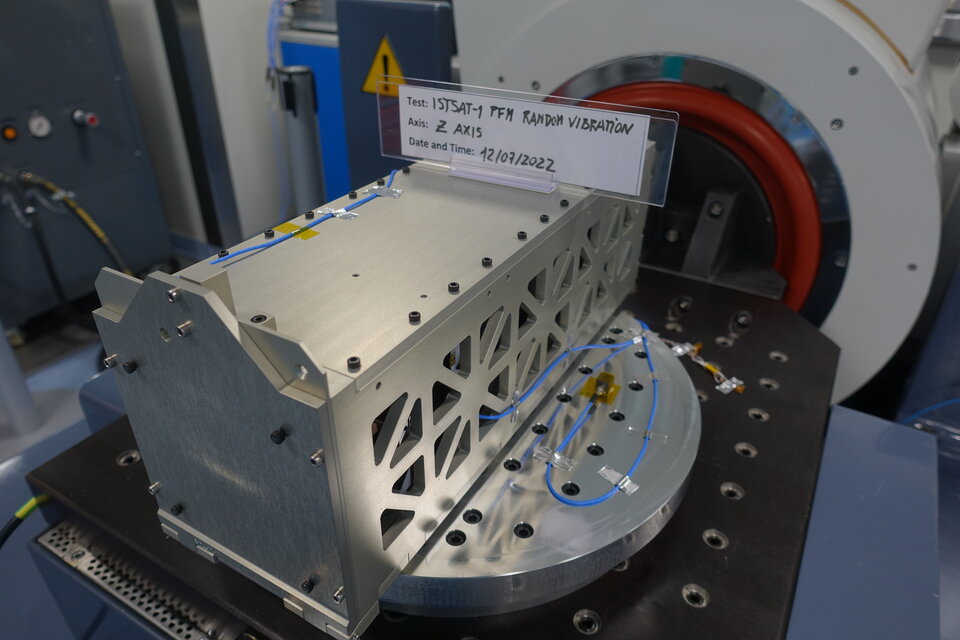Fly Your Satellite! vibration tests challenge the resolve of ISTSat-1 students
In brief
ISTSat-1 is a CubeSat designed and built by students at Instituto Superior Técnico in Lisbon as part of ESA Academy’s Fly Your Satellite! programme. Its ambitious mission is to carry out a feasibility study on the use of nanosatellites to track and characterise the transponder signals of aircraft (ADS-B) over remote areas. Before ISTSat-1 can undertake this task, it must go through a serious of rigorous tests to maximise its ultimate chance of success.
In-depth
Most recently, from 11 to 15 July 2022, four students from the ISTSat-1 team visited the CubeSat Support Facility, at ESEC, in Belgium, for a vibration test campaign. This important step reproduces the stresses a satellite will experience during a rocket launch into orbit by vigorously shaking it across three axes. It is a major milestone for any space object built on Earth, from small Cubesats to large spacecraft. The students used their recently-assembled protoflight model for this important step.

Impressively, the ISTSat-1 CubeSat contains many components that have been designed and built by the students themselves, including the structure, onboard computer, electrical system and battery pack, communication subsystem, and even a bespoke ADS-B antenna and receiver. This has given the students a wealth of experience, but comes with the inherent additional risks of using in-house solutions.
Unfortunately, the vibration test was not without incident. After two of the five planned days, ISTSat-1 was undergoing a close visual inspection when a structural crack was spotted on one of the solar panels. This meant it was necessary to interrupt the campaign, having completed tests along just one of the three axes.

This was clearly a blow to the students, but a lot of useful data had been gained. Several areas for improvement were noted, in particular relating to the satellite’s structural design. The students will need to investigate further before attempting the vibration test again. Their morale remained high despite the setback, and they are keen to incorporate all necessary improvements and make ISTSat-1 even better than before!
“Although the test campaign was interrupted, it was an enriching experience in which I learned a lot for my future career,” explained studentLetícia Araújo. “I’ve been working as a structural engineer in the ISTSat-1 team, and as such, it was also gratifying to see that despite the panel failure, some of the key vibration results in the z-axis were good and as expected according to the analyses I've been working on for years.”

In addition, the CubeSat Support Facility is a classroom, and so throughout the week the students learned about running a test campaign to professional standards. Important lessons in cleanliness, contamination control, and electro-static discharge protection were an integral part of the experience, and the students were carefully supported throughout by ESA Education staff.

Ultimately, the students adjusted admirably to performing lab work and responded to the structural failure commendably. The entire experience of planning and running the test campaign has helped the students to acquire valuable skills and knowledge, which will be integral to their future careers as space engineers and scientists. The importance of environmental testing was made very evident, and it was clear that theoretical simulations alone may not accurately predict the outcome of a “real-world” test. Perhaps most important of all, the team have now identified and will be able to solve a critical issue before their satellite flies into space!


